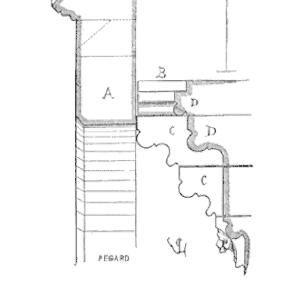
Why do Reliability Engineers Still Use 217?
Abstract
Kirk and Fred discussing the continued use of Reliability prediction and the very outdated government reference document, MIL HDBK 217.
Key Points
Join Kirk and Fred as they discuss a old subject of the use of MIL 217, which is still referenced by many companies, and its value and validity.
Topics include:
- The value or cost of following or using MIL 217 for any purpose
- Using real field data is a reasonable way of predicting future iterations of similar products.
- Components and materials have changed significantly in the 25+ years since the last revision, and the physics of failure are not the same as for electronic devices from 25 years ago.
Enjoy an episode of Speaking of Reliability. Where you can join friends as they discuss reliability topics. Join us as we discuss topics ranging from design for reliability techniques, to field data analysis approaches.

Show Notes
Here is a link to the article “Exposing Reliability Conflict of Interest” posted on Accendo Reliability that Fred and me discuss in this podcast.
Here is the link (public domain) US Army and CALCE document “Reliability Prediction- Continued Reliance on a Misleading Approach”. Please distribute freely.
Here is a link to Kirk’s popular Accendo article “Why the Drain in the Bathtub Curve Matters” .
For more information about Kirk’s Consulting services, please see his Accelerated Reliability Solutions website please click here
To see or purchase Kirk’s new book co-authored with John Paschkewitz, “Next Generation HALT and HASS: Robust Design of Electronics and Systems” please click on this link.
We always appreciate your feedback and questions. Thanks for listening.
 Ask a question or send along a comment.
Please login to view and use the contact form.
Ask a question or send along a comment.
Please login to view and use the contact form.
Hi Fred,
Thanks for the podcast. Well in my previous organisation i used Mil-217 to calculate the failure rates of electronic components and use them in FMEA to identify the failure rates of different failures. These events were used in quantitative FTA to check the whether the hazard condition is meeting its safety targets of passenger vehicles.
Even though there is RIAC-217+ , IEC 62380 are available for calculation of failure rates we were using Mil-217 as it gives worst case failure rates and if the safety target of hazard conditions are met with these then we can have more confidence on the risk probability of the hazard condition.
Kumar
Hi Kumar,
Thanks for listening to our podcast. I am glad you liked it.
The points I made in the podcast were that the foundations of MIL 217 and consequently all of the prodigy such as Relex, Telccordia and others are invalid and result in misleading and sometimes costly design changes that are not based on physics of failure.
The US Army material specialist published a paper explaining why these reliability methods are a misleading approach to developing reliable systems.
You can download and distribute it freely (it is in the public domain) from this link http://www.acceleratedreliabilitysolutions.com/images/Reliability_Predictions_Continued_Reliance_on_a_Misleading_Approach.pdf
I reached back into the archive, and gave this one a listen. I mostly agree with Kirk this time. While Fred clearly denounces 217, he says that is does promote some positive design practices such as fewer parts,, derating, etc. I agree with Kirk that, even if that is true, there are better ways to achieve that.
In the comment above, Kirk says the foundations of 217 are invalid. I wouldn’t say they were invalid, just misguided. Instead of “invalid,” I would say they are inapplicable, inappropriate, inaccurate and woefully outdated. Even if they were kept up-to-date, there would be no value-added.
I am knowledgeable about the origins, development and intent of those models. Many of the pi-factors are fictitious in my opinion, and always were. The pi-factors for package type, screening, quality, temperature, derating were introduced into the models without sufficient justification to promote what was considered to be good design practices, and to penalize what was considered to be bad design practices. However, the actual numbers themselves were often not justifiable.
Thanks so much for your comments on our podcast David. It means a lot coming from someone with your experience and knowledge. Maybe “invalid” was not the correct term but you have given additional reasons that MIL 217 is misguided and its use adds no value-added.
Thanks again for listening, and your feedback